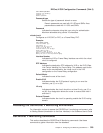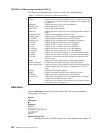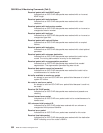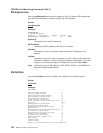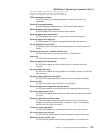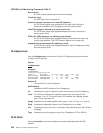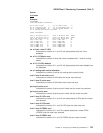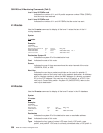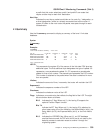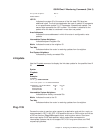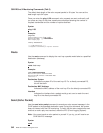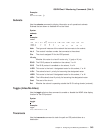
Syntax:
is-is-stats
Example:
is-is-stats
Link State Database Information
no. of level 1 LSPs 1 no. of level 2 LSPs 0
no. of L1 Dijkstra runs 21 no. of L2 Dijkstra runs 0
no. of L1 LSPs deleted 0 no. of L2 LSPs deleted 0
no. of routing table entries allocated 6
Packet Information
level 1 lan hellos rcvd 0 level 1 lan hellos sent 10967
level 2 lan hellos rcvd 0 level 2 lan hellos sent 10967
pnt to pnt hellos rcvd 0 pnt to pnt hellos sent 0
level 1 LSPs rcvd 0 level 1 LSPs sent 40
level 2 LSPs rcvd 0 level 2 LSPs sent 0
level 1 CSNPs rcvd 0 level 1 CSNPs sent 0
level 2 CSNPs rcvd 0 level 2 CSNPs sent 0
level 1 PSNPs rcvd 0 level 1 PSNPs sent 0
level 2 PSNPs rcvd 0 level 2 PSNPs sent 0
no. of level 1/level 2 LSPs
Indicates the number of L1 and L2 link state packets that are in the
database.
no. of L1/L2 Dijkstra runs
Indicates the number of times the router computed the L1 and L2 routing
tables.
no. of L1/L2 LSPs deleted
Indicates the number of L1 and L2 link state packets that were deleted from
the database.
no. of routing table entries allocated
Indicates the number of entries the routing able currently holds.
level 1/level 2 lan hellos rcvd
Indicates the number of LAN hellos the router has received.
level 1/level 2 hellos sent
Indicates the number of LAN hellos that router has sent.
pnt to pnt hellos rcvd
Indicates the number of point-to-point hellos that the router has received.
pnt to pnt hellos sent
Indicates the number of point-to-point hellos that the router has sent.
level 1/level 2 LSPs rcvd
Indicates the number of L1 and L2 link state packets (LSPs) that the router
has received.
level 1/level 2 LSPs sent
Indicates the number of L1 and L2 LSPs that the router has sent.
level 1/level 2 CSNPs rcvd
Indicates the number of L1 and L2 complete sequence number PDUs
(CSNPs) that the router has received.
level 1/level 2 CSNPs sent
Indicates the number of L1 and L2 CSNPs that the router has sent.
OSI/DECnet V Monitoring Commands (Talk 5)
Chapter 10. Configuring and Monitoring OSI/DECnet V 337



